How Ketamine Offers Rapid Relief for Treatment-Resistant Depression


July 24, 2025
Understanding Rapid Relief for Severe Cases of Depression
Depression remains one of the most challenging mental health conditions worldwide, especially for those classified as treatment-resistant. Traditional therapies, including pharmacological and psychotherapeutic interventions, often take weeks to show benefits, leaving many patients in despair. Recent advancements have introduced ketamine, a drug originally used as an anesthetic, as a promising rapid-acting treatment for severe depression, particularly when standard options have failed. This article explores how ketamine works, its efficacy supported by scientific research, treatment procedures, safety considerations, and ongoing advancements shaping its future.
How Ketamine Provides Rapid Relief for Treatment-Resistant Depression

Is ketamine prescribed for depression?
Yes, ketamine is increasingly prescribed for depression, especially for cases that have not responded to traditional treatments. The FDA approved a specialized form called esketamine (Spravato) in 2019, as a nasal spray for treatment-resistant depression (TRD). This medication must be administered in a clinical setting under strict medical supervision to ensure safety.
Ketamine’s rapid effects can begin within about 40 minutes after administration, making it a valuable option for immediate relief, particularly in severe depression or when there are suicidal thoughts. Although it offers significant symptom relief, it does not cure depression permanently. Its use is typically part of a broader treatment plan that may include psychotherapy, ongoing medication management, and monitoring.
While generally effective for many patients, ketamine therapy does carry potential side effects, such as dissociation, elevated blood pressure, nausea, and dizziness. Because of these risks, medical supervision is essential, and the treatment is reserved for individuals who meet specific eligibility criteria, including having tried at least two other antidepressants without success.
Overall, ketamine’s approved and off-label applications highlight its role as a promising but complex treatment option for resistant depression. Proper medical oversight and comprehensive care plans maximize benefits while managing risks.
The Neurobiological Foundation of Ketamine's Antidepressant Effects
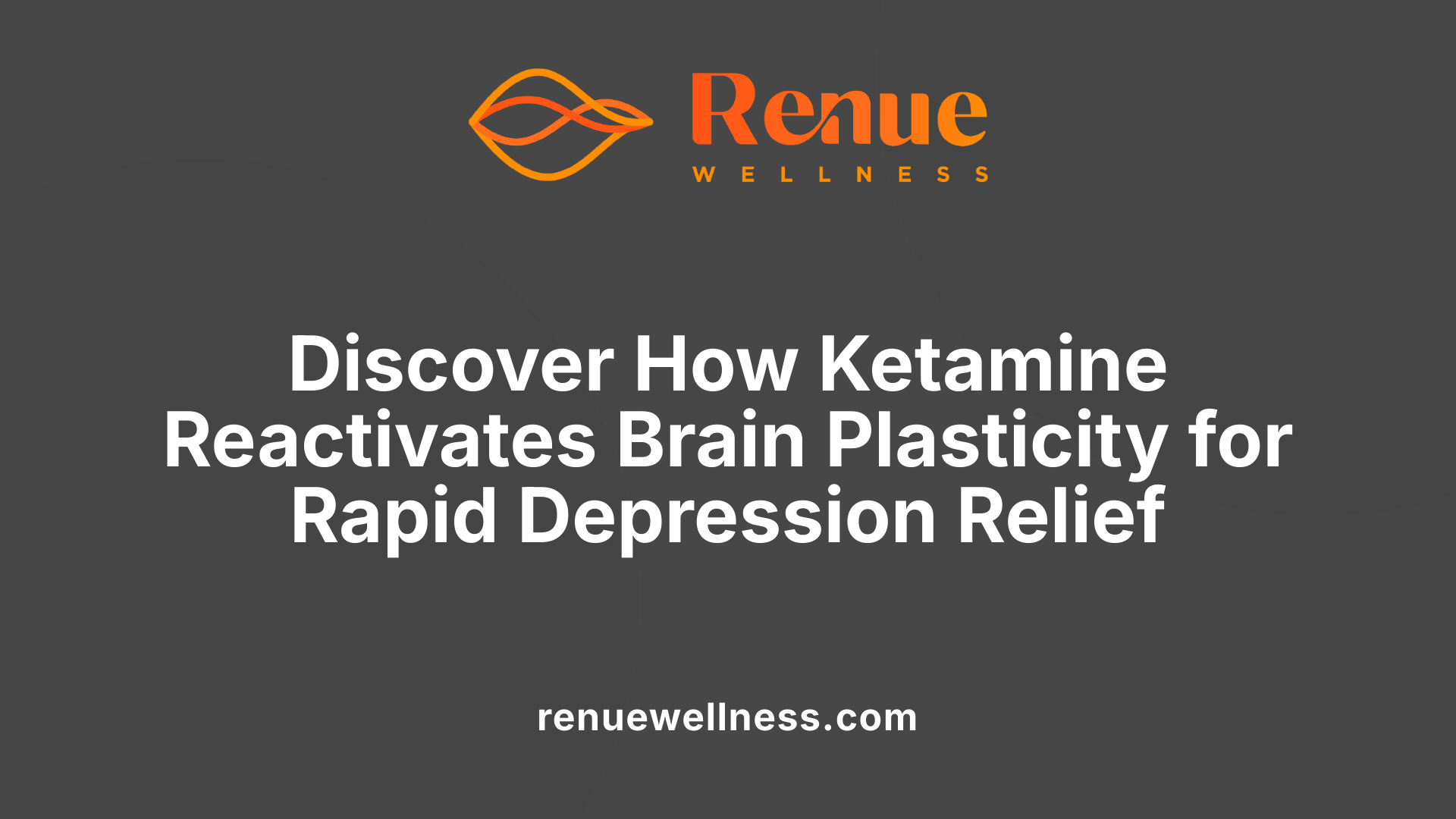
What are the neurobiological mechanisms underlying ketamine's antidepressant effects?
Ketamine’s rapid antidepressant action stems from a complex interplay of mechanisms centered around its influence on the brain’s glutamate system. At its core, ketamine functions as a non-competitive antagonist of NMDA receptors, which are critical for synaptic transmission and plasticity. By inhibiting these receptors primarily on GABAergic interneurons, ketamine reduces inhibitory control over excitatory neurons, leading to a surge in glutamate release in the cortex.
This increase in glutamate then activates AMPA receptors, facilitating faster and more efficient synaptic signaling. The heightened activity of AMPARs triggers a cascade of signaling pathways that foster neural growth and resilience. Key among these are the brain-derived neurotrophic factor (BDNF) pathway, the mammalian target of rapamycin (mTOR) pathway, and the glycogen synthase kinase-3 (GSK-3) pathway. Activation of BDNF promotes neurogenesis and synaptogenesis, while stimulation of mTOR enhances protein synthesis crucial for forming new synaptic connections.
Furthermore, ketamine influences neuroplasticity by modulating homeostatic plasticity mechanisms, balancing glutamate and GABA activity, and reducing neuroinflammation that is often elevated in depression. These effects collectively lead to an increase in synaptic density, especially in brain circuits involved in mood regulation, such as the prefrontal cortex and limbic system.
How does neuroplasticity change with ketamine?
One of the most prominent effects of ketamine is its ability to rapidly promote neuroplasticity. This involves dendritic growth, increased spine formation, and synaptogenesis, which help rewire defective neural circuits that underlie depressive symptoms.
In depression, neural pathways often show decreased connectivity and impaired communication between regions like the prefrontal cortex and the hippocampus. Ketamine reverses these deficits quickly, often within hours after administration, creating a window of heightened plasticity. During this period, patients are more receptive to therapeutic interventions such as psychotherapy, increasing the overall treatment efficacy.
This burst of plasticity supports the rebuilding of neural networks that regulate mood, cognition, and emotional resilience, leading to sustained improvements even after the immediate effects of ketamine fade.
Which biological pathways are involved?
Several interconnected signaling pathways play a role in ketamine’s antidepressant effects:
| Pathway | Role | Effect in Depression | How Ketamine Acts |
|---|---|---|---|
| NMDA receptor inhibition | Regulates excitatory neurotransmission | Dysfunctional in depression, leading to impaired neuroplasticity | Blocks NMDA receptors on GABA interneurons, disinhibiting glutamate release |
| AMPA receptor activation | Facilitates fast synaptic transmission | Enhances neuroplasticity and connectivity | Increased glutamate activates AMPARs |
| BDNF signaling | Supports neuronal growth | Reduced in depression | Stimulated by increased AMPA activity, promoting neurogenesis |
| mTOR pathway | Regulates protein synthesis for synaptic growth | Impaired in depression | Activated downstream of glutamate, leading to synaptogenesis |
| GSK-3 inhibition | Modulates mood stability | Abnormal activity linked with mood disorders | Ketamine suppresses GSK-3 activity, stabilizing neural function |
Additional components include modulation of neuroinflammatory responses and influence on neurotoxicity pathways, further protecting neural tissue and enhancing resilience.
Summing it up
Ketamine’s speed and efficacy as an antidepressant are largely rooted in its ability to rapidly activate neuroplasticity-related pathways. By modulating neurotransmitter systems and boosting neurotrophic factors, ketamine helps repair and rebuild neural circuits disrupted by depression. These findings not only explain its clinical benefits but also guide the development of new treatments targeting these pathways for longer-lasting relief.
Procedures and Protocols in Ketamine Treatment
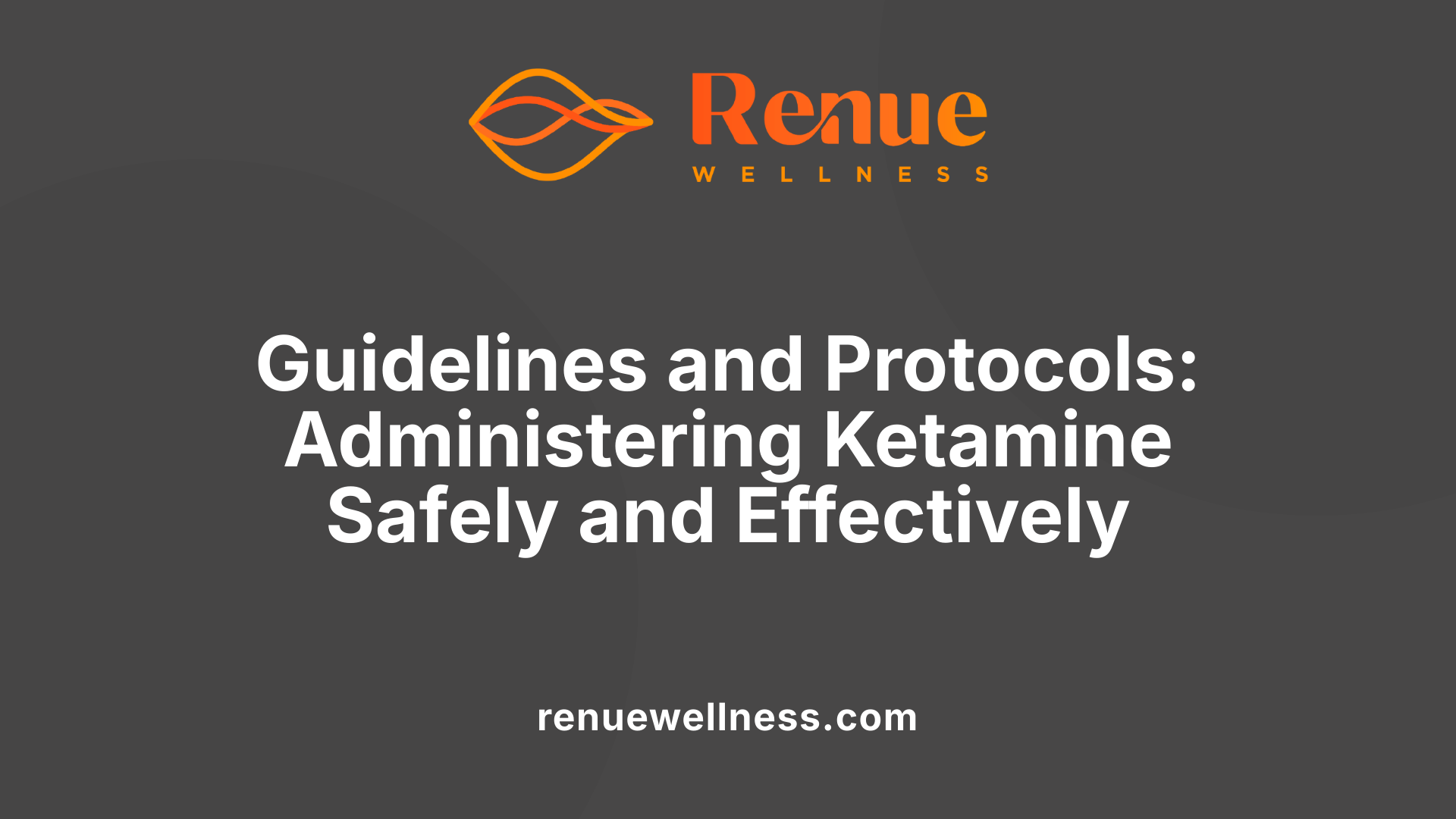
What are the current overview and procedures for ketamine treatment?
Ketamine therapy for mental health conditions, particularly treatment-resistant depression (TRD), involves administering low doses of ketamine through various routes such as intravenous (IV) infusion, intranasal spray (known as esketamine), or intramuscular injection. These treatments are carried out in a clinical setting where healthcare professionals closely monitor each session to ensure patient safety and treatment effectiveness.
The typical treatment plan includes a series of sessions spread over several weeks. Usually, patients undergo three initial infusions or administrations per week for about 2-3 weeks. This initial phase aims to rapidly alleviate symptoms, especially suicidal ideation, which ketamine is particularly effective at reducing within hours. After the initial phase, patients are reassessed, and depending on their response, they may continue with additional infusions or switch to maintenance schedules. The overall goal is to achieve and sustain remission of depressive symptoms.
Before starting treatment, patients undergo comprehensive evaluations, including medical history, current medications, blood pressure readings, and mental health assessments. Contraindications such as psychosis, uncontrolled high blood pressure, recent surgery, or active substance abuse are carefully considered. Patients are typically advised to avoid alcohol and recreational drugs before sessions.
Throughout the treatment, vital signs like blood pressure and heart rate are monitored continuously, especially during IV infusions or nasal spray application, due to potential side effects such as hypertension or dissociation. The infusion sessions generally last about 40 minutes to an hour, during which patients may experience mild perceptual disturbances or dissociative effects that usually resolve within hours.
Post-treatment, patients often receive integration therapy, which may include counseling or psychotherapy such as cognitive behavioral therapy (CBT), to help incorporate insights and behavioral changes. Follow-up assessments determine the need for additional treatments and help evaluate the durability of therapeutic effects.
In the case of nasally administered esketamine, the FDA-approved protocol involves patients receiving the nasal spray under medical supervision in a clinical setting, typically twice a week initially, then less frequently as symptoms improve. Patients are monitored for side effects like dizziness, nausea, or transient hallucinations, which generally peak within 40 minutes and resolve within a few hours.
While ketamine treatment is generally deemed safe when administered correctly, potential side effects include dissociation, nausea, elevated blood pressure, dizziness, and transient perceptual distortions. Though rare, risks like abuse potential, addiction, or psychotomimetic effects require careful patient screening and monitoring.
It is emphasized that ketamine is prescribed as part of a comprehensive treatment plan, often combined with psychotherapy, and not used as a stand-alone cure. Continued research and clinical experience support its role as a rapid-acting modality for cases where traditional antidepressants and therapies have failed.
The procedures are designed to maximize therapeutic benefits while minimizing risks. As research continues, protocols may evolve, but safety protocols involving patient screening, monitored administration, and post-treatment care remain central to effective ketamine therapy.
Unveiling the Neurobiology: From NMDA Inhibition to Synapse Regrowth
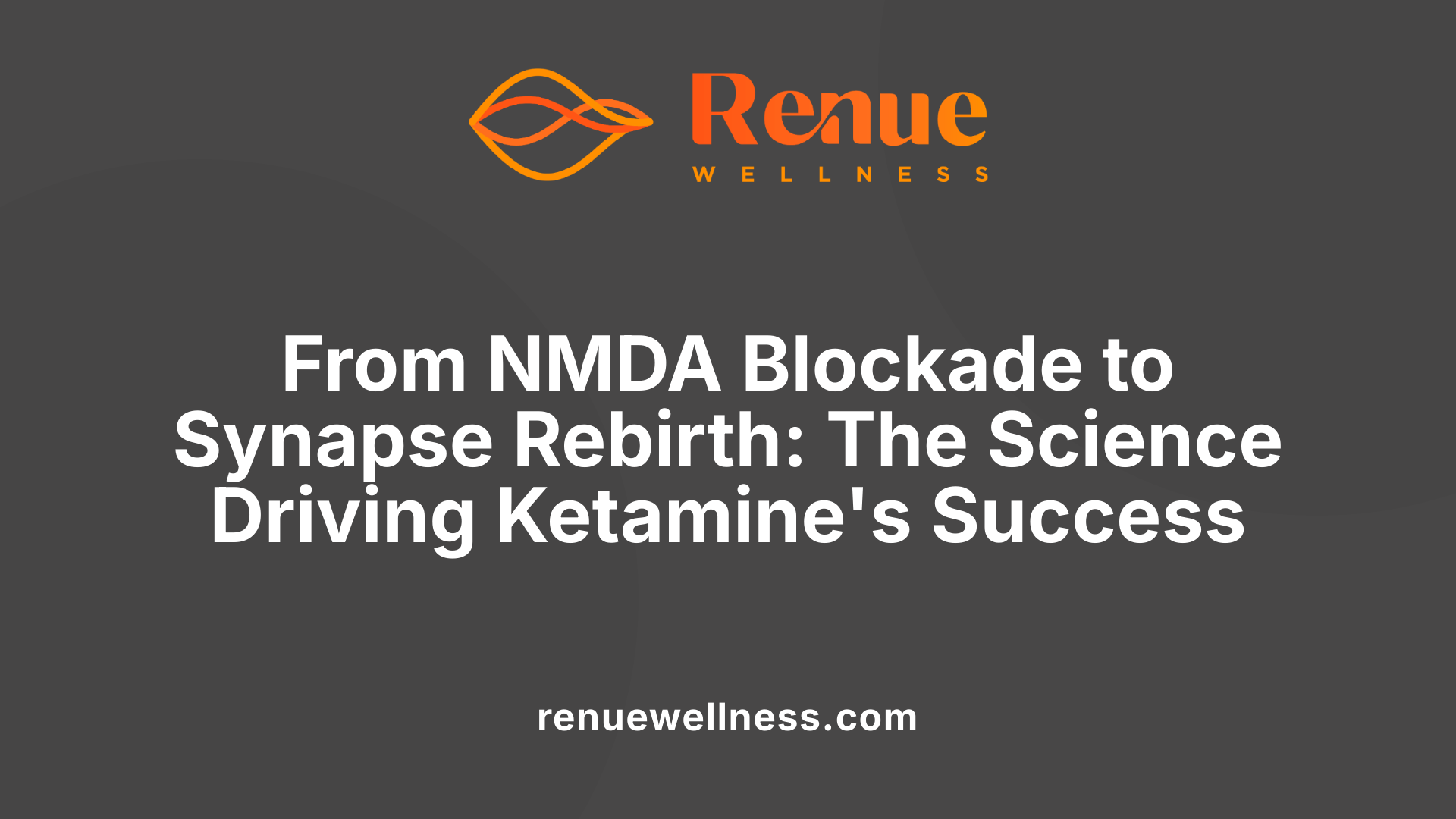
What does the research say about the efficacy of ketamine treatment for depression?
Research consistently demonstrates that ketamine and its derivative, esketamine, have shown rapid and potent antidepressant effects, especially in cases where traditional treatments have failed. Multiple clinical trials indicate that a single low-dose intravenous (IV) infusion can significantly improve depression symptoms within hours. These effects are often sustained for several days to a week, providing quick relief that standard antidepressants typically cannot match.
The response rates in these studies vary, but many report that between 50% to 70% of patients experience substantial symptom reduction after treatment. Notably, ketamine has also been effective in rapidly decreasing suicidal ideation, with some patients reporting relief within 24 hours of administration. This rapid action is crucial in crisis situations.
In 2019, the FDA approved intranasal esketamine as an adjunctive therapy for treatment-resistant depression (TRD). This approval underscores the robust evidence from randomized controlled trials demonstrating its efficacy. Esketamine has been shown to produce clinical improvements within minutes to hours, with about 44% of patients responding in some studies.
While traditional antidepressants may take weeks to produce noticeable effects by increasing serotonin, norepinephrine, or dopamine levels, ketamine directly targets the glutamate system, promoting neuroplasticity and synaptogenesis. This mechanism explains its rapid onset of action.
Ongoing research seeks to optimize the treatment protocols—such as dosage, frequency, and combination with psychotherapy—and to broaden understanding of how ketamine’s neurobiological effects translate into clinical benefits. These studies aim to establish long-term safety and efficacy, which remain areas of active investigation.
Overall, the accumulating evidence endorses ketamine as a promising breakthrough for depression treatment, notably in treatment-resistant cases, and highlights the need for accessible, safe, and effective protocols for wider clinical use.
The Duration of Benefits: How Long Does Ketamine’s Effect Last?
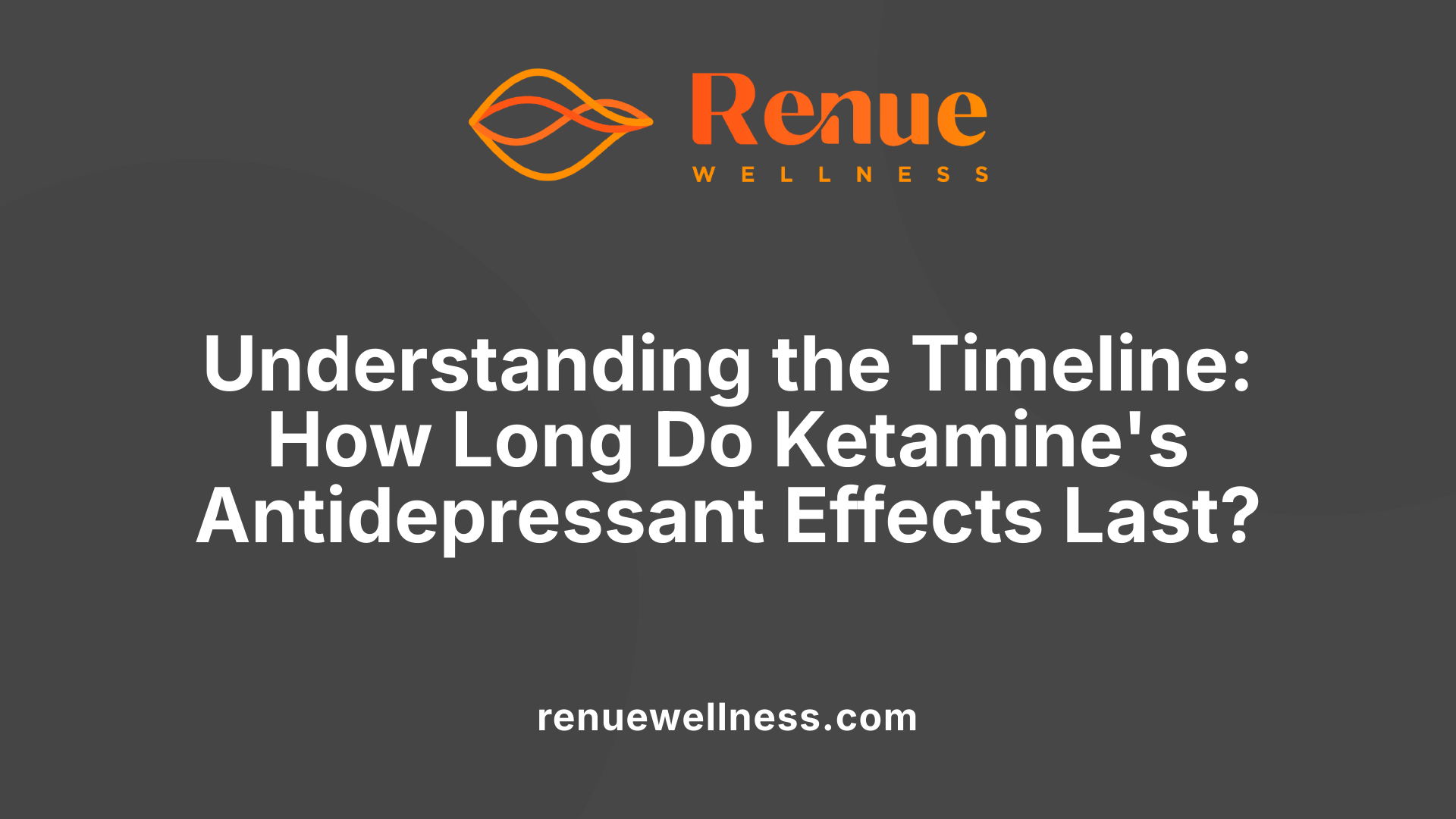
Onset of Effects
Ketamine is renowned for its rapid action in treating depression. Most patients notice improvements within hours of administration, with peak effects often occurring around 24 hours later. This quick response contrasts sharply with traditional antidepressants, which can take weeks to show benefits.
Duration of Antidepressant Effects
The relief provided by ketamine infusions tends to be short-lived, typically lasting between 3 and 10 days after a single treatment. Clinical studies report that many patients experience a significant reduction in depression symptoms and suicidal thoughts within the first 24 hours.
When administered as a one-time dose, the antidepressant effects are usually transient. Some research indicates that the majority of patients may need multiple sessions to maintain symptom relief. The effects often diminish over a week, which means ongoing treatment is necessary for sustained improvement.
Maintenance Strategies
To extend the benefits of ketamine therapy, many treatment plans include repeated infusions. These can be scheduled weekly or monthly, depending on individual response and clinical judgment. Repeated infusions have been shown to prolong remission periods, sometimes keeping symptoms at bay for several weeks or even months.
Some clinics implement a graduated treatment schedule, starting with a series of infusions over a few weeks, followed by maintenance treatments tailored to patient needs. Combining ketamine with psychotherapy, such as cognitive behavioral therapy (CBT), can also enhance long-term outcomes.
Overall, while ketamine provides rapid initial relief, maintaining its effects involves a structured treatment schedule and ongoing clinical oversight. This approach helps optimize therapeutic benefits and reduce the risk of relapse.
| Treatment Phase | Typical Duration | Details |
|---|---|---|
| Initial Series | 2-3 weeks | Multiple infusions over a few weeks to achieve response |
| Maintenance Infusions | 4 weeks to several months | Scheduled to sustain symptom relief |
| Long-term Management | Variable | Combining therapies and regular monitoring |
This structured approach ensures that patients experience the maximum benefit from ketamine therapy, with sustained improvements in mood and reduction in suicidal thoughts.
Ketamine’s Benefits and Safety Profile for Severe Depression
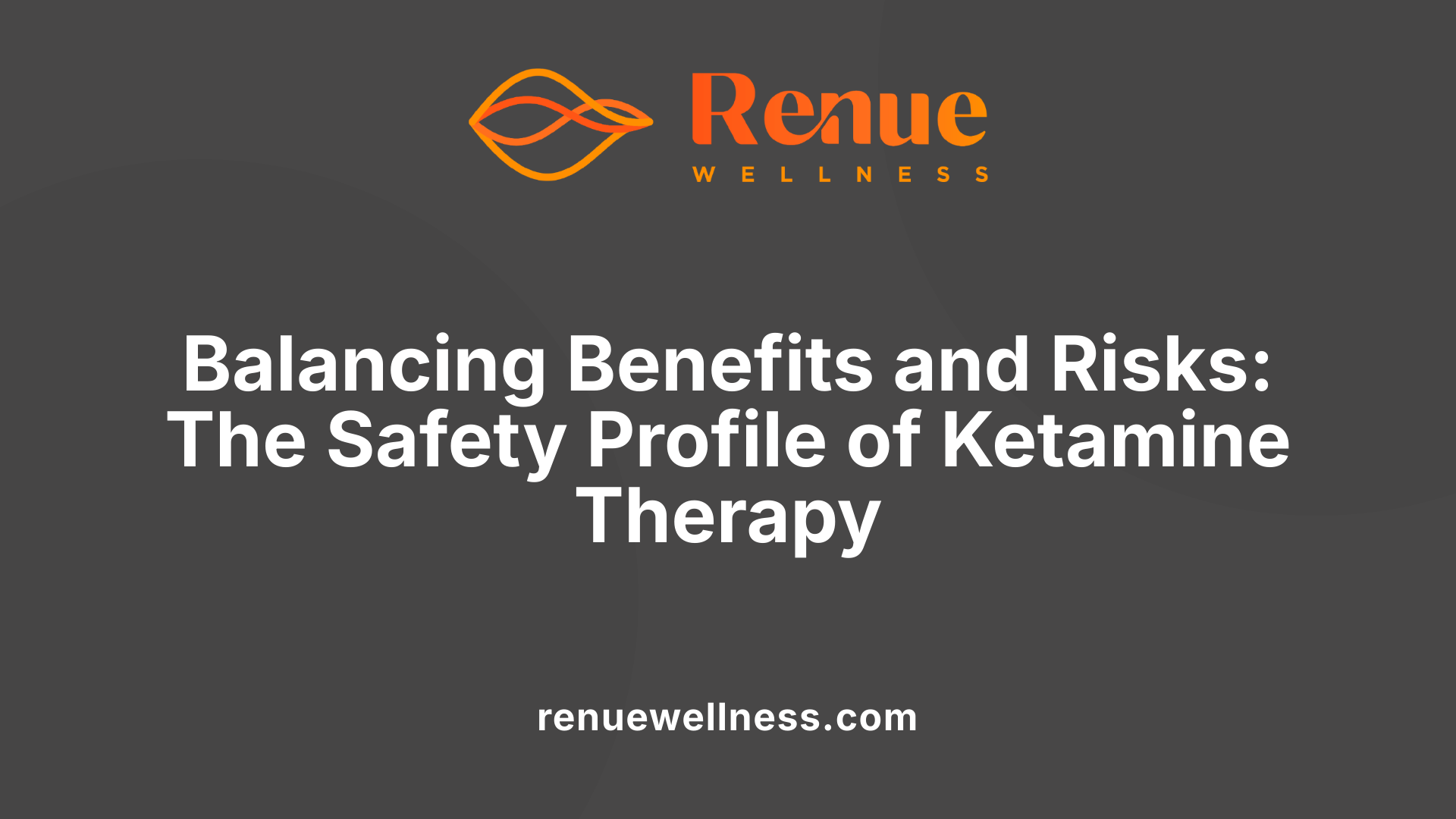
What are the benefits and safety considerations of ketamine therapy for severe depression?
Ketamine has emerged as a promising treatment for severe depression, especially for individuals whose symptoms have not responded to traditional therapies. Its most notable benefit is the rapid relief of depressive symptoms. Unlike conventional antidepressants, which may take weeks to show effects, ketamine can produce noticeable improvements within hours, with effects typically lasting several days or even weeks.
One of the mechanisms behind ketamine’s effectiveness lies in its ability to promote neuroplasticity. It reactivates and encourages the formation of new synaptic connections between neurons, which can help restore proper neural communication disrupted by depression. This process may contribute significantly to alleviating symptoms and reducing suicidal ideation.
In terms of safety, when administered under professional medical supervision, ketamine treatment is generally well-tolerated. Common transient side effects include dissociation, dizziness, nausea, temporary increases in blood pressure, and mood shifts. These effects usually resolve within a short span after treatment sessions. However, long-term safety remains an area of active research. Potential issues such as bladder damage, liver health concerns, dependency, tolerance, and cognitive effects have been reported but are less common with controlled medical use.
It is crucial to understand that ketamine is not yet officially approved specifically for depression by regulatory agencies but is used off-label based on positive clinical outcomes. Ongoing studies aim to clarify its long-term safety and effectiveness. Patients should be carefully selected, and treatment should be conducted by experienced healthcare providers who can oversee proper dosing, monitor adverse effects, and provide supportive care.
What are the common side effects and safety considerations with ketamine treatment?
The side effects associated with ketamine therapy are mostly transient and manageable. Typical reactions include dissociation—a feeling of detachment from reality or oneself—along with dizziness, mild perceptual disturbances, nausea, and a temporary increase in blood pressure. Some patients may experience hallucinations or altered perceptions, but these tend to fade quickly, usually within 15 to 30 minutes post-treatment.
A minority of individuals might encounter more challenging reactions, such as severe dissociation or agitation, which necessitate immediate medical attention. Overall, approximately 10% of patients report intense side effects; however, these are generally short-lived.
From a safety standpoint, it’s essential to recognize that ketamine is classified as a Schedule 3 controlled substance. This classification reflects its potential for misuse and dependence. Risks include developing tolerance, which may lead to escalating doses, and dependency. Additionally, long-term effects, including possible urinary tract issues and cognitive changes, are still being studied.
Given these risks, ketamine treatment should be confined to licensed clinics equipped with comprehensive monitoring protocols. Proper assessment of patient history is critical to avoid adverse outcomes, especially for vulnerable groups such as individuals with a history of psychosis, active substance use, or pregnancy.
In conclusion, while ketamine offers substantial promise as a rapid-acting antidepressant, ensuring safety requires rigorous oversight, thorough patient screening, and adherence to established protocols.
| Aspect | Details | Additional notes |
|---|---|---|
| Efficacy | Rapid symptom relief within hours, lasting days to weeks | Valuable for treatment-resistant cases |
| Administration | IV infusion, intranasal spray (esketamine), intramuscular injection | Requires professional supervision |
| Side effects | Dissociation, dizziness, nausea, increased blood pressure | Usually resolve within hours |
| Long-term safety | Under investigation; concerns include dependence and organ health | No long-term data yet |
| Monitoring | Vital signs, mental health status, adverse reactions | Essential to prevent complications |
| Contraindications | Psychosis, uncontrolled hypertension, pregnancy, substance abuse | Screening is vital |
| Legal status | Schedule 3 controlled substance | Under strict regulation |
Overall, ketamine’s impact on depression highlights its potential as a fast-acting therapy, but it must be employed cautiously to mitigate risks, with ongoing research crucial to fully understand its long-term safety.
Future Directions and Recent Advances in Ketamine Therapy

What are the recent developments and advancements in ketamine therapy for depression?
Recent years have seen remarkable progress in the field of ketamine treatment for depression, particularly for individuals with treatment-resistant depression (TRD). One of the most notable advancements is the development of innovative formulations, such as nasal sprays—most prominently esketamine (Spravato)—and intravenous (IV) infusions. Esketamine, approved by the FDA in 2019, provides a rapid onset of antidepressant effects, often within hours, making it a valuable option for urgent therapy needs like suicidal ideation.
The deployment of nasal sprays has expanded the accessibility of ketamine’s benefits, allowing treatments to be administered in outpatient settings under medical supervision. IV infusions remain the most studied and effective route for inducing rapid symptom relief, with typical sessions lasting 40 minutes to an hour. Patients often undergo a series of infusions over several weeks, resulting in significant reductions in depression severity and suicidality.
Alongside formulation innovations, understanding the neurobiological mechanisms of ketamine has advanced considerably. New research focuses on the role of intracellular signaling pathways such as ERK, mTOR, and BDNF, which mediate neuroplasticity—the brain’s capacity to form new connections. Optimizing these pathways may enhance the durability of ketamine’s effects and reduce relapse rates.
An exciting area of development involves metabolites like RR-HNK (racemic hydroxy-norketamine), which show potential to provide antidepressant effects without the psychotomimetic side effects associated with ketamine. Early human studies indicate that such derivatives are well tolerated, with a favorable safety profile, potentially broadening treatment options.
Critical to personalizing therapy, biomarker research has gained momentum. Studies aim to identify biological indicators—such as blood-based markers—that can predict an individual’s response to ketamine treatment. This approach could refine candidate selection, improve success rates, and guide maintenance strategies.
Clinical trials, including the notable Bio-K study, have demonstrated that multiple infusions can lead to sustained improvements in depression and reduce suicidal thoughts. Approximately 70% of patients showed at least a 50% reduction in depression severity following a carefully monitored treatment course.
This progress in understanding and application reflects a broader goal: to enhance the safety, efficacy, and longevity of ketamine therapy. Researchers continue to explore combination approaches—pairing ketamine with psychotherapy or other interventions—to maximize benefits and tailor treatments to individual needs.
| Development Area | Description | Impact |
|---|---|---|
| Formulation Advances | Nasal spray (esketamine), IV infusions, and new derivatives | Increased accessibility, rapid effects |
| Neurobiological Insights | Signaling pathways like BDNF, mTOR, ERK | Improved understanding of mechanisms |
| Metabolite Research | RR-HNK and similar compounds | Potential for fewer side effects |
| Biomarker Discovery | Blood markers predicting response | Personalization of treatment |
| Clinical Trials | Repeated infusions and combination therapies | Enhanced durability of benefits |
Overall, the field is moving toward more targeted, effective, and safer ketamine-based treatments, promising better outcomes for those suffering from refractory depression.
Transforming Depression Care Through Fast-Acting Solutions
Ketamine’s emergence as a rapid-acting treatment for depression marks a significant breakthrough in mental health care, offering hope to millions who have not responded to traditional therapies. With its unique neurobiological mechanisms, demonstrated efficacy, and ongoing innovations, ketamine is transforming the landscape of depression treatment. As research advances and safety profiles become clearer, this therapy could become more accessible and tailored, ultimately improving outcomes for those facing severe and resistant forms of depression. However, careful medical supervision remains essential to maximize benefits and minimize risks, paving the way for a future where rapid relief is more widely available, and mental health treatment is both effective and safe.
References
- Ketamine for Depression: How It Works > News > Yale Medicine
- Mechanisms of Ketamine Action as an Antidepressant - PMC
- Ketamine for treatment-resistant depression: When and where is it ...
- The Role of Ketamine in Treatment-Resistant Depression
- Rapid relief for the severely depressed? There's a catch.
- Understanding Ketamine Treatment for Depression
- The Benefits of Ketamine Therapy | Lone Peak Psychiatry
Recent Posts
Conditions Treated
AnxietyDepressionOCDPTSDPostpartum DepressionPain ManagementSubstance AbuseSuicidal IdeationOur Location


